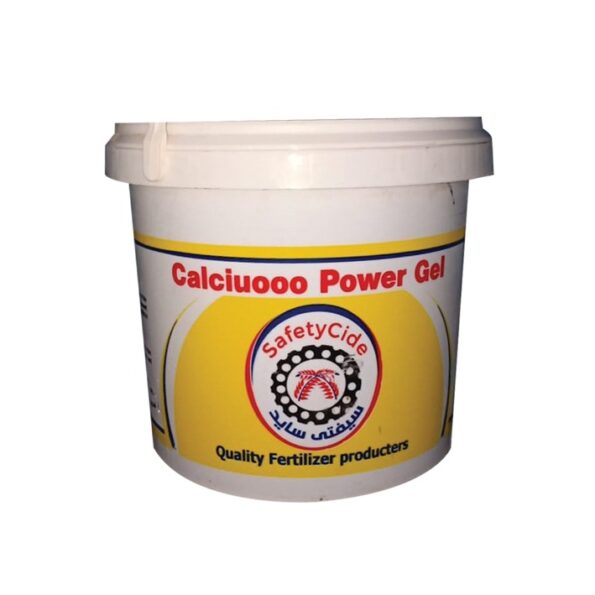
Calcioporer gel (energy complex)
1.00EGP 0.00EGP
Installation:
Ammonium nitrogen: 1.36%
Nitrate nitrogen: 8.45%
Calcium: 10%
Total nitrogen: 10%
Compound features:
Supercalcium carbonate: an energy compound that works to liberate calcium so that it becomes a cation
Which facilitates and accelerates its rapid absorption and entry into the plant. Also, the presence of the element in the form of a free cation makes the element work within the plant in functional tasks quickly, which reduces calcium deficiency and prevents the appearance of symptoms of calcium deficiency on the plant. Supercalcium chloride increases the plant's immunity against fungal infection.
Supercalciumporer (salt repellent)
The presence of the calcium element in the compound in the form of a free cation facilitates and accelerates the association of the calcium element with chlorine and the expulsion of the sodium element, which is washed through the irrigation water.
Based on 0 reviews
|
|
|
0% |
|
|
|
0% |
|
|
|
0% |
|
|
|
0% |
|
|
|
0% |
Related products
سماد ورقي
جيل التركيب نيتروجين : ۶۲۰ – احماض امينية 45 % . ماغنسيوم %۱
امينوجيل سماد ورقي في صورة جيل يحتوي على نيتروجين وماغنسيوم واحماض أمينية حرة لجميع محاصيل الخضر والفاكه لتنشيط التمثيل الغذائي وزيادة طاقة النبات .
يحتوي على تركيز عالي من النيتروجين والاحماض الأمينية الحرة التي تقلل من تأثير الإجهاد الناتج عن الحرارة العالية والصقيع . يزيد بشكل عالي من النمو الخضري الزهري والثمري .
يساعد على تكوين الأوكسينات المسئولة عن عملية الاستطالة في السيقان وكذلك نمو البراعم يحتوي على عنصر الماغنسيوم الذي يدخل في عملية تكوين الكلوروفيل . برفع من انتاجية الفدان بشكل ملحوظ .
Usage rates
يضاف من 1-5 سم / لتر ماء ويكرر كل 10 ايام
75 in stock
Compound benefits
FunsoHumic is a fertilizer that contains phosphorus in two forms: Porea Novsoric, the first is phosphate for nourishment and stimulating the roots and the second is for protecting against root organs. The compound also contains a high percentage of humic to stimulate the roots.
Phosphohumic is a fertilizer rich in potassium. It is a source of potassium phosphate and potassium humate. Therefore, phosphohumic helps in developing a strong plant.
Usage rates: kg of randan after transplanting.
99 in stock
Installation:
Nitrogen:20%
%phosphorus: 20
% Potassium: 20
Compound features
X-Press is an integrated ground and foliar fertilizer that contains a group of macroelements and microelements that are quickly dissolved and absorbed
X-Press contains nitrogen, phosphorus and potassium in pure, easily absorbed forms, so it increases the total. The vegetative
X-Press treats the symptoms of macro- and micro-element deficiency in plants. X-Press reduces stress resulting from heat and frost
Usage rates
| stage to use | Dosage (kg/acre/day) | The crop |
| Immediately after transplanting | 2-3 | Vegetables |
| Before flowering | 2-4 | the fruit |
| Branching stages | 1.5-2 |
Field crops |
89 in stock
Installation:
26.1%: phosphorus
22.7%: potassium
Compound features
Anti fertilizer is fast absorbed because the elements carry amino acids, carboxylic acids and monosaccharides. The compound is characterized by the presence of phosphorus in two forms: Phosphate as nutrition and phosphate as prevention and treatment of: Fungal diseases such as: Downy mildew and mealybug diseases in onions Cucumber Cantaloupe Grapes
3- Diseases of the fungus of Fitunshra such as: late blight in potatoes and tomatoes
2- Diseases of pythium fungi and fusarium on: seedlings of vegetables and fruits (root rot).
It also contains potassium and also zinc and magnesium, so the Ante compound has a major role in the plant, especially in raising plant immunity, and also works Ante fertilizer to raise the efficiency of the flowering process, nodes, growth and development of fruits in different crops, which increases the size of the crop and quality in terms of color, shape and taste
Dosage and rate of use:
Fertilization (root rot) immediately after seedling and 500 cm / acre
. Fertilization ( Niol Fusarium ) : liter / acre .
Spraying (fungal infection such as downy mildew, mealybug and pollin): 500 cm / 200 liters of water
99 in stock
Installation:
Nitrogen :13%
Potassium: 46%
A fertilizer rich in potassium in the purest and most powerful form of potassium for absorption, which is the form of potassium nitrate. The (Elec) product is distinguished by containing potassium nitrate with a purity of 99.9%. Therefore, the compound is used as a spray on the shoots or ground fertilization to help hold the flowers and size the fruits.
Fertilizer (Potassium Alic) provides additional benefits including
High purity and low percentage of salts. – Humidity level is low. – Low acidity, rapid flow. – Rapid dissolution
– High percentage of nitrogen and potassium
Potassium nitrate (Potassium Alec) is easy and safe to use on crops, flowers, vegetables, strawberries, plants (indoor and outdoor), teak, potatoes, fruit trees, grapes, citrus fruits, pineapples, cotton, bananas, mangos, olives, tomatoes, potatoes, home gardens and green spaces.
يوفر اليك K Many positive effects such as, increased root growth, improves drought resistance, reduces water loss and wilting, improves winter cold resistance and improves resistance to pests and diseases.
Installation:
Nitrogen: 15%
Phosphorus: 15%
Potassium: 15%
Compound features:
Manufactured from high-quality raw materials that are soluble and quickly absorbed
. Potassium source fertilizer: Potassium titrate is quickly soluble and absorbed
. Fertilizer is a source of phosphorus that is quickly dissolved and absorbed
. High-purity crystalline fertilizer that is completely soluble in water
. It has an acidic effect, which increases the ability of micro and macro elements to be absorbed
It increases branching in both vegetable and fruit crop seedlings
Usage rates
| stage to use | Dosage (kg/acre/day) | The crop |
| Immediately after transplanting | 2-3 | Vegetables |
| Before flowering | 2-4 | the fruit |
| Branching stages | 1.5-2 |
Field crops |
فوسفیت
Installation
فوسفور
P : % 43 ( وزن / حجم )
بوتاسيوم K : % ۲۸
( وزن / حجم ) ماغنسيوم : أ % ( وزن / حجم )
Compound benefits
فوسفيت :
يزيد ويعزز من النمو الجذري يحسن الطعم والتخزين ولون محاصيل الفاكهة نتيجة تمكين النبات من زيادة المواد الصلبة وتحسين خواص الثمار .
يحسن النظام المناعي للنبات حيث يعمل على تحسين مستوى مقاومة النبات للأمراض الفطرية حيث يقي من :
القرعيات و البياض الزغبي والنقيقي و عفن التاج الجذري و البطاطس والطماطم و اللفحة المبكرة
والمتأخرة وعفن الجذور و البياض الزغبي والدقيقى و الفراولة وعفن الجذور والثمار
و الحمضيات و عفن جذور الحمضيات و التفاح
• العنب
Dosage and rate of use:
Application and time of use, usage rates and yield
Foliar spraying every 7 days during the crop growth period (vegetative, floral, fruitful) 1-3 cm/liter of water for vegetables
(tomatoes - potatoes - onions - cucumbers - cantaloupe)
Fertilizing with water. Irrigation 3 days after transplanting. Repeat 2 times a week. 1-1/2 liter/acre. Vegetables (after transplanting)
Foliar spraying every 7 days during the period of vegetative growth, flowering, and fruiting. 2-4 cm/liter of water for fruit and ornamental plants.
The addition is made with head water every 10 days during the growing season, 5 cm per 8 liters for fruit seedlings and ornamental plants (seedlings).
Installation:
Nitrogen:12%
Phosphorus: 12%
potassium:12%
Compound benefits
Vera fertilizer is characterized by containing balanced proportions of the major elements: nitrogen - phosphorus - potassium in the form of an easy-to-absorb grain. It is also loaded with a high percentage of amino acids, monosaccharides, and carboxylic acids, which expand and facilitate the absorption of major and minor elements through the leaves. Vera excels
A- With a high percentage of nitrogen, which facilitates foliar absorption and helps in the formation of a strong vegetative system.
2- The presence of a high percentage of phosphorus, which plays an important role in the flowering process and also works to warm the plant
3- Potassium, which facilitates foliar absorption, plays an important and major role in transporting nutrients to and from the cell. It also helps in the absorption of water, which increases the size of the fruits and the speed of their ripening. Stress over the news
Vera fertilizer contains amino acids that help the plant form a high concentration of hormones and enzymes and reduce the effect of...
Usage rates
Times of use: Drip irrigation, foliar spray per 100 liters of crop water
3-5 times 1 liter/acre 50-150 cm vegetables
4-6 times 1-2 liters/acre 50-200 cm of fruit
Installation:
Nitrogen: 15.5%
Calcium oxide: 26% = 18.5 mineral calcium
Compound features:
A quickly soluble fertilizer compound in water, consisting of two ideal elements: nitrogen and calcium, which can be easily absorbed by the plant
This formula is completely soluble in water, which works to provide the plant with these two elements with a high efficiency that is unparalleled in other fertilizers. – This formula is an uncoated granule that dissolves quickly and can be used in greenhouses and open fields, whether through sprinkler or drip irrigation systems.
- Calcium has an effective role in the movement of carbohydrates in the plant and increases the thickness of the outer peel of the fruits, which helps in their transport and storage. - Calcium increases the plant’s resistance to diseases (seed end rot, nail head rot, fruit cracking, prevention and treatment of calcium deficiency)
Calcium works to reduce salinity in the soil when used through drip irrigation. Nitrogen helps build protein quickly inside the plant
Calcium plays an important role in activating enzymes and meristematic tissues in the growing tips and encourages the growth of root hairs
Calcium helps increase production, improve fruit color and thickness, and improve fruit properties
Note: OSHA calcium nitrate dissolves 100% in plain water (complete dissolution)
Usage rates, through fertilization of 3/8 kg per acre or according to the fertilization program or the nature of the land and the plant’s needs.
the components:
Nitrogen:8%
phosphorus:8%
Potassium: %8
25%: iron
Manganese: 5%
Manganese: 5%
Magnesium: 5%
Compound benefits
Sheri Eit fertilizer is characterized by containing nitrogen, phosphorus, and potassium (potassium nitrate) in a pure form that is easy to absorb. It is also loaded with a high percentage of amino acids, monosaccharides, and carboxylic acids, which facilitate and facilitate the absorption of major and minor elements through the leaves.
Three-Eight is characterized by the presence of a high percentage of amino acids that help the plant to form a high concentration of hormones and enzymes and reduce the effect of stress on the plant.
Gray Alt fertilizer contains microelements in a high percentage that helps in treating the deficiency of elements in plants. Zinc and magnesium also play an important enzymatic role in increasing plant immunity
Usage rates
Times of use: Drip irrigation, foliar spray per 100 liters of crop water
3-5 times 1 liter/acre 50-150 cm vegetables
4-6 times 1-2 liters/acre 50-200 cm of fruit
مكونات السماد
|
العناصر |
التركيز ( % ) |
|
الفوسفور ( p ) |
15 % , 12.5 % |
|
الكالسيوم (CaO) |
4.5 % |
| الكبريت (S) |
2.5 % |
يعتبر من اكثر الاسمدة الفوسفاتية استخداما فى مرحلة تجهيز التربة قبل بداية الزراعة وفى بداية موسم النمو لمختلف انواع الاشجار نثراً على سطح التربة
ثم يخلط مع طبقة سطح التربة أثناء الحرث حيث يتميز بأنه سماد ذو تأثير ممتد المفعول يحتوى على عنصر الفسفور الضرورى للنبات كما يحتوى على الجبس
والذى يعتبر مصدر امداد النبات بعنصر الكالسيوم بالاضافة الى تأثيره المفيد فى زيادة نسبة الكالسيوم المتبادل وبالتالى تحسين الخواص الطبيعية للتربة
أهمية إستخدام المركب
غذاء رئيسى للنبات له تآثير طويل المفعول
يوجد الفسفور فى صورة سهلة الإمتصاص عن طريق الجذور مما يؤدى إلى زيادة نسبة الإنبات والإزهار
الفوسفور يحسن من جودة الثمار والخضر والحبوب و إمتلاء القرون فى البقوليات
الفسفور عنصر هام فى جميع التفاعلات الإنزيمية اللازمة لتكوين وترحيل المركبات الكربوهيدراتية مما يزيد من جودة المنتج
الفسفور عصر هام فى عملية التمثبل الضوئى والتنفس ونقل وتخزين الطاقة داخل النبات
الفسفور أحد المركبات الهامة فى نواة الخلية و ذلك لأن وجوده أساسى لإتمام عملية إنقسام الخلية
يساعد على سرعة النضج و تكوين البذور
الكالسيوم عنصر هام فى مقاومة النبات للملوحة
الكبريت عنصر هام فى تنشيط العقد البكتيرية مما يرفع من معدلات تكوين البروتين
يخزن لمدة طويلة دون أن يتحجر
يخدم الأرض لأكثر من محصول على مدار السنة الزراعية
يخلط مع الاسمدة العضوية والكمبوست و لا يخلط مع معظم المبيدات
مواعيد و طرق التسميد
يضاف السماد خلال مراحل النمو الأولى للنبات لزيادة و تقوية المجموع الجذرى
يضاف فى مرحلة تكوين البراعم الزهرية لتحسين الأزهار والعقد
يستخدم لجميع المحاصيل الحقلية و محاصيل الخضر و الفاكهة
بالنسبة للمحاصيل الحقلية والخضروات المحمية و المكشوفة
ينثر السماد بصورة منتظمة فى الحقل خاصة قبيل الحرثة الأخيرة بمعدل من 4 – 6 شكاير للفدان (200-300 كجم/فدان)
بالنسة لأشجار الفاكهة
يوضع السماد قبيل جريان العصارة فى النبات أى فى نهاية فصل الستاء وقبيل دخول فصل الصيف للأشجار
ويضاف بمعدل من 6-8 شكاير للفدان ( 300 – 400 كجم / فدان )





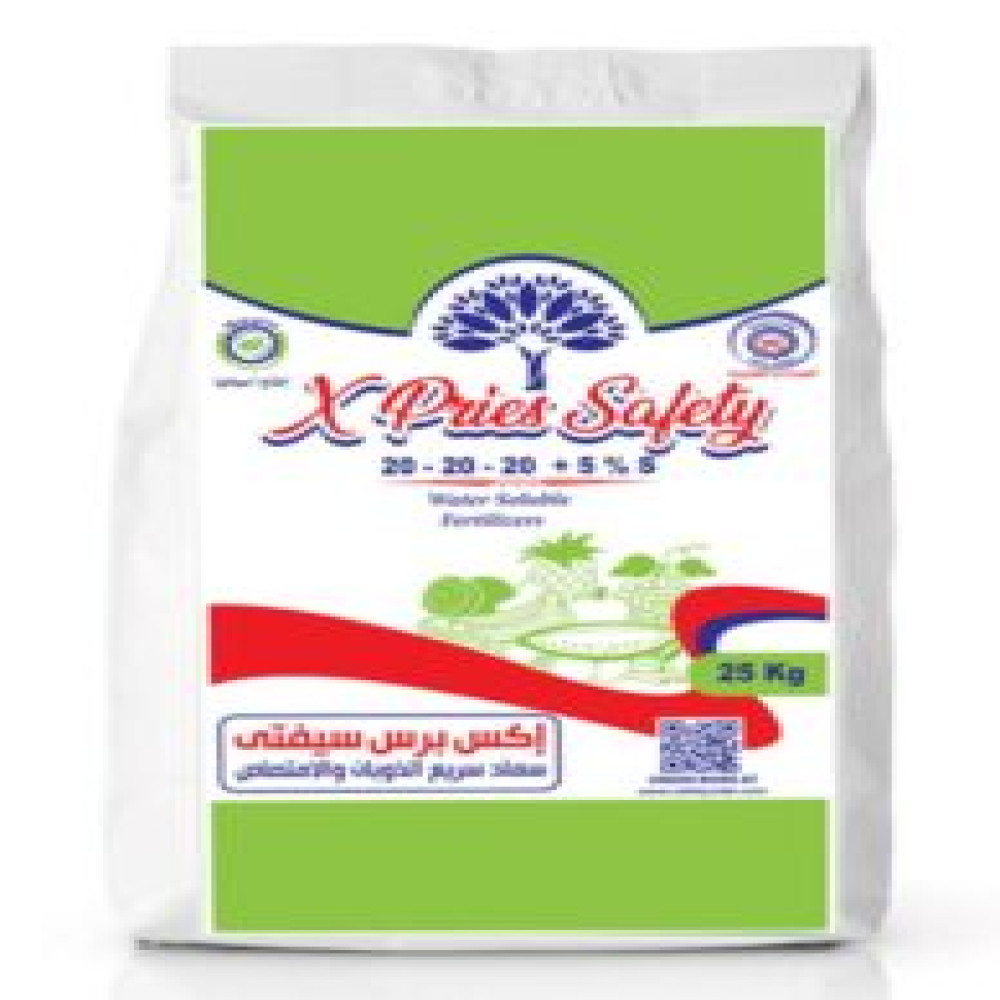
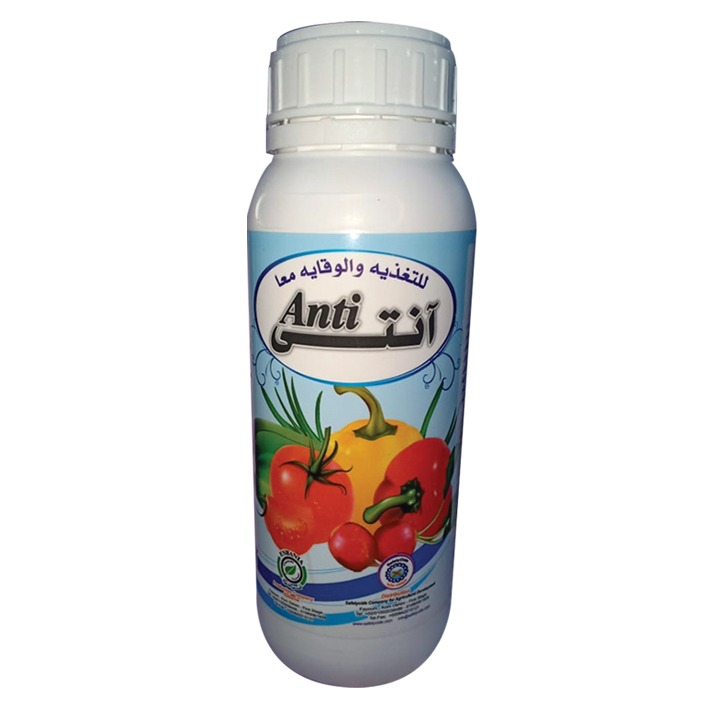
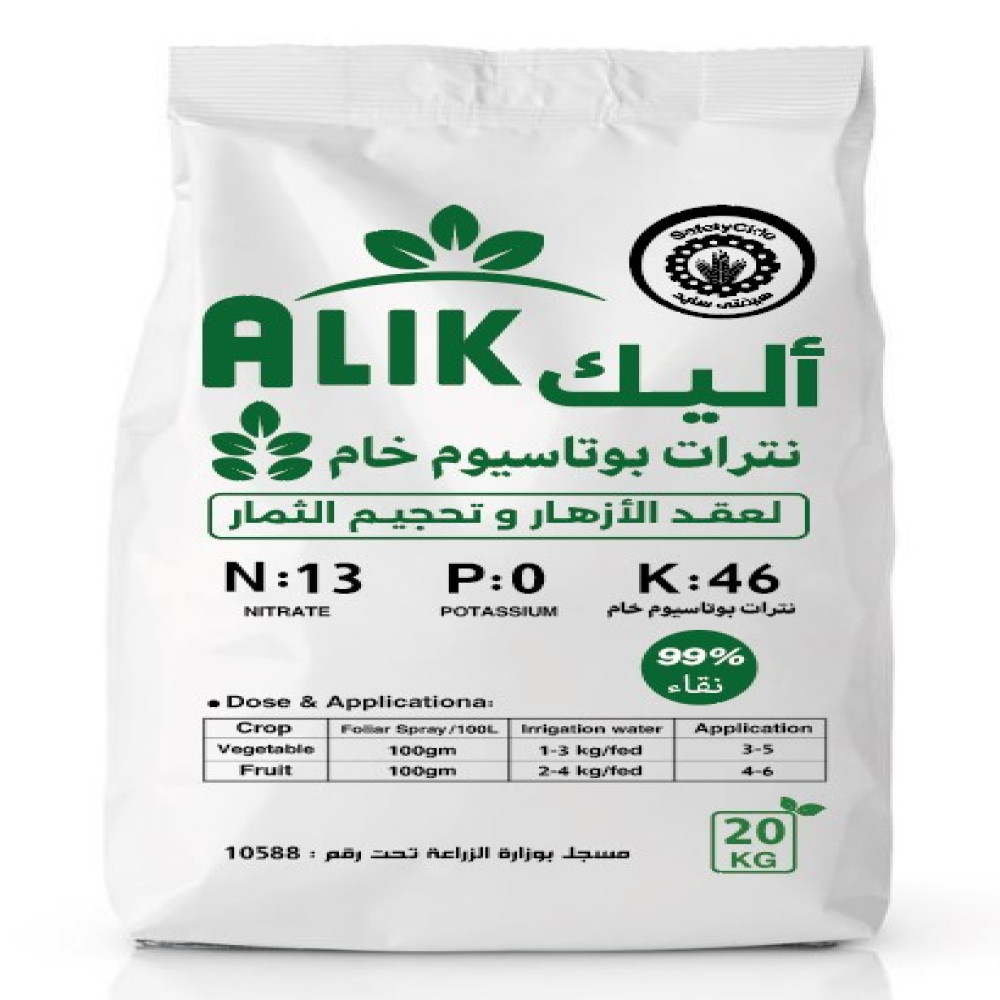
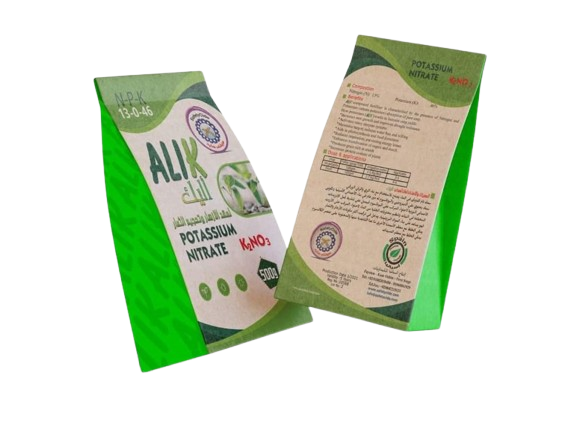
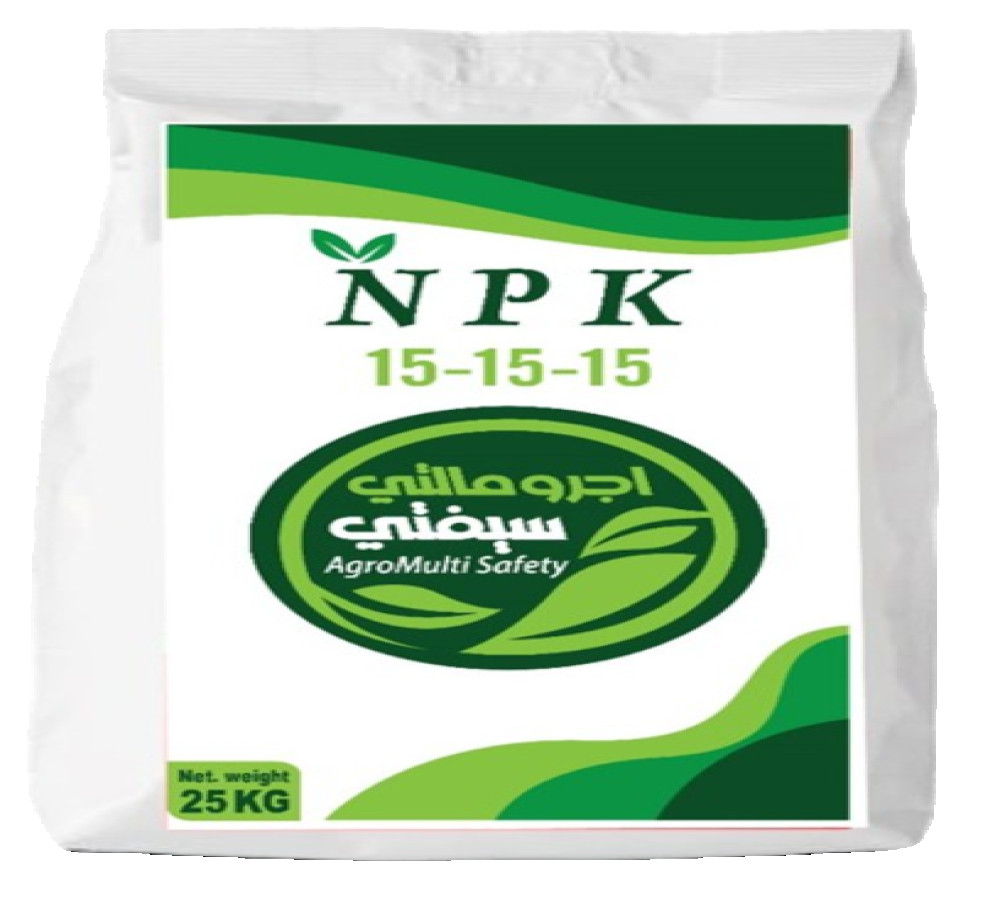

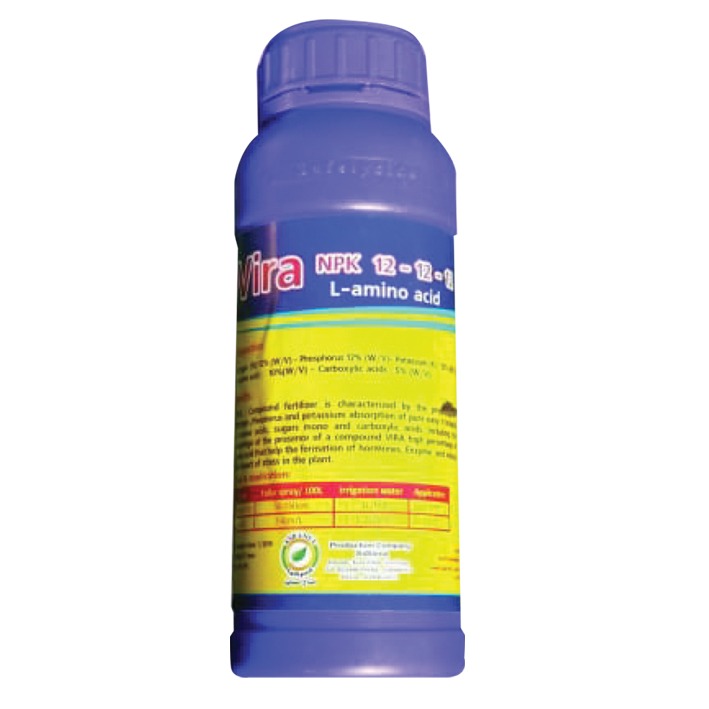



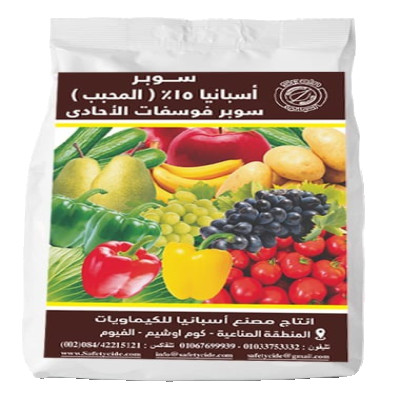
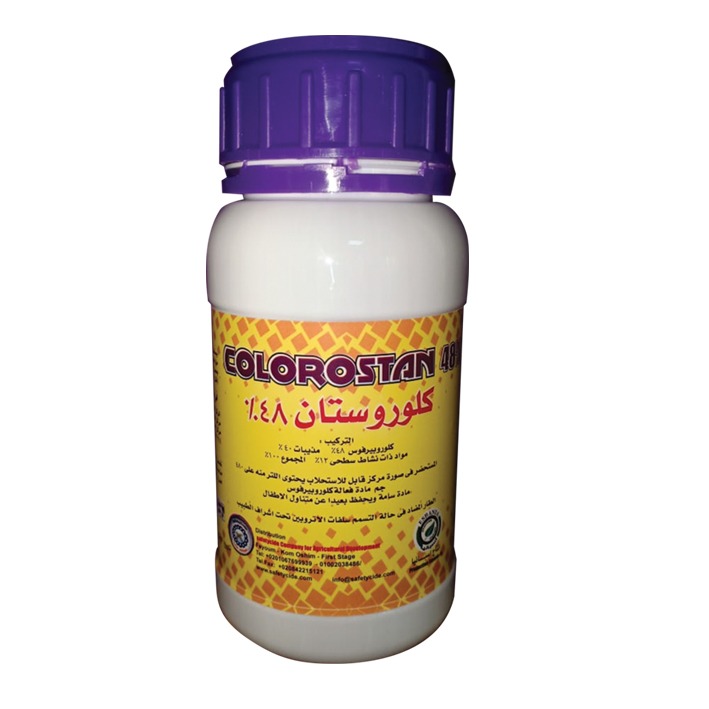
Reviews
There are no reviews yet.